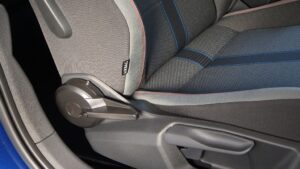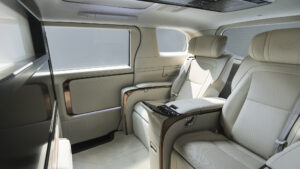Few things are as frustrating as driving in a noisy car. Whether it’s road noise, wind, or engine sounds, these distractions can take the joy out of driving and make long trips uncomfortable. Fortunately, there are several simple and effective ways to reduce noise and create a more serene environment inside your vehicle. Here’s how you can make your car interior quieter for a more peaceful ride.
1. Install Soundproofing Materials
One of the most effective ways to reduce noise in your car is by adding soundproofing materials. Sound-deadening mats like Dynamat or Noico can be installed under the carpets, on the floor, and inside the doors to absorb and dampen vibrations and noise. These materials are specifically designed to reduce road noise and can significantly improve the quietness of your car’s cabin.
For DIY enthusiasts, these mats are easy to install—just cut them to size and place them under your car’s interior panels. They work by blocking out sound waves and preventing vibrations from traveling through the metal body of your vehicle.
2. Upgrade Your Tires
Believe it or not, your tires play a major role in how much noise you hear inside the car. Low-profile tires or those with a harder tread compound can increase road noise, especially on rough surfaces. Switching to touring tires or all-season tires can make a noticeable difference in reducing road noise, as these tires are designed with softer rubber and more tread patterns to absorb the sound of the road.
Additionally, keeping your tires properly inflated can also reduce noise. Underinflated tires can increase friction with the road, leading to more noise and even reducing your fuel efficiency.
3. Replace Worn Door Seals
The seals around your car doors are essential for keeping out both air and noise. Over time, these seals can wear out, leading to gaps that allow noise, wind, and even water to enter the cabin. Inspect the seals around your doors and windows. If they’re cracked or brittle, it’s time to replace them.
New weatherstripping can help create an airtight seal, keeping unwanted noise out and maintaining a comfortable interior environment. This simple fix can make a big difference, particularly when driving at highway speeds where wind noise tends to be most noticeable.
4. Use Window Insulation Film
Acoustic window insulation film is a lesser-known but highly effective way to reduce outside noise. This transparent film can be applied to the interior of your windows and acts as a sound barrier. It also has the added benefit of reducing heat from the sun, making your car cooler in the summer.
If your vehicle has thin glass windows, this film can make a considerable difference in cutting down on wind and traffic noise. It’s a cost-effective solution for those who want to improve cabin comfort without spending a lot on upgrades.
5. Replace Old Suspension Components
Your car’s suspension system helps to absorb bumps and vibrations from the road. If your shocks or struts are worn out, your car may transmit more noise and vibrations into the cabin. Replacing old suspension components can drastically improve not only your car’s ride quality but also its noise levels.
A smoother ride means less noise inside the car, especially when driving over rough or uneven terrain. Consider getting your suspension checked if you notice excessive road noise or a bumpy ride.
6. Install Noise-Reducing Wind Deflectors
Wind noise is a common problem, especially when driving at higher speeds. One simple solution is to install noise-reducing wind deflectors on your windows and sunroof. These deflectors help to streamline airflow around the car, reducing the amount of wind that enters the cabin.
This small modification can make a big difference in reducing the high-pitched wind noise you often hear on the highway, allowing you to enjoy a quieter drive.
7. Check and Tighten Loose Parts
Over time, certain parts of your car can loosen and create rattling or vibrating noises. Common culprits include dashboard components, door panels, and even the exhaust system. Performing a simple inspection to identify and tighten loose screws or fasteners can eliminate annoying rattles that contribute to overall noise levels.
In some cases, adding a bit of padding or insulation between loose parts can also help reduce vibrations and quiet your car’s interior.
8. Maintain Your Exhaust System
A noisy exhaust system is not only unpleasant but can also be a sign of a bigger problem. If you notice a loud, rumbling noise coming from the back of your car, it could be due to a damaged or worn-out muffler. Exhaust leaks can significantly increase the amount of noise inside your car.
Regular maintenance of your exhaust system, including replacing a faulty muffler, can ensure that your car stays quiet. If you hear any unusual sounds, have a professional mechanic inspect your exhaust for leaks or damage.
Conclusion
A noisy car can turn what should be a peaceful drive into an irritating experience. By following these tips, you can drastically reduce the amount of noise inside your car, making for a much more enjoyable and comfortable ride. From simple fixes like tightening loose parts to more involved projects like adding soundproofing materials, there are plenty of ways to make your car as quiet as possible. Whether you’re commuting to work or embarking on a long road trip, a quieter car means a more relaxing journey.
This article is designed to provide practical advice while also considering search engine optimization (SEO) best practices to help more readers find valuable content on creating a quieter car interior.











Comments